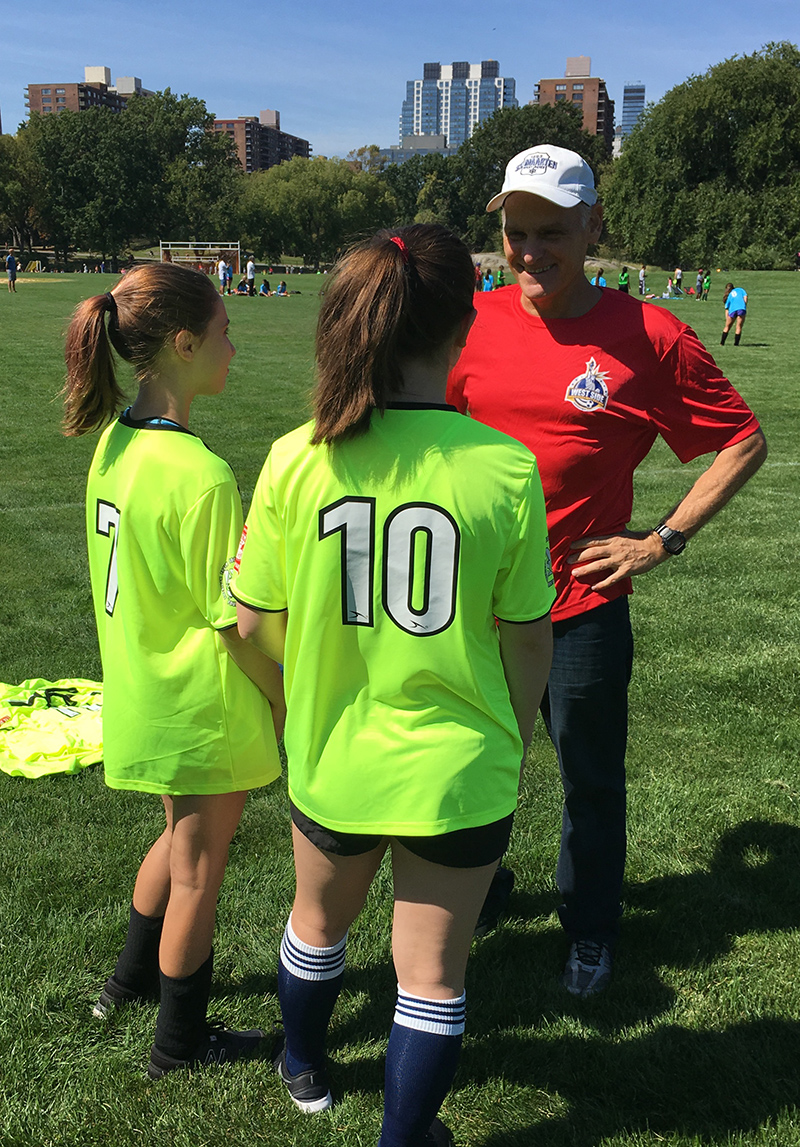
Welcome to the West Side Soccer League Coaching Program - Wisdom from WSSL's Coach Administrator & Trainer
Welcome to the West Side Soccer League. The WSSL extends you a special message of appreciation for volunteering to enrich the lives of our youngest players. Since the WSSL was founded in 1986, the vision and mission of youth soccer has changed dramatically. After extensive study of successful programs around the world, national youth organizations are beginning to understand the practical applications of Goethe's statement, "Youth prefer to be stimulated, rather than instructed."
After the Australian sports authority conducted a world-wide study to locate the best youth soccer programs, Tom Sermanni, who was coaching their National Women's Soccer Team at the time, summarized the result: "The overwhelming evidence from successful soccer countries was that we should be doing less formal coaching with our young players and that they should be playing in small sided games to help develop their skills."
The movement toward a player-centered experience is the AYSO vision, using the soccer experience to enrich a child's life, engage their enthusiasm, and foster their growth and potential. How we apply this in our role as coaches is what is covered in our coaching clinics and described in our coaching manuals.
The AYSO vision is supported by the principles of positive instruction, good sportsmanship, and player development. The simplest application of positive instruction is to "catch them being good," the title of book written by Tony Dicicco, the US Women's National Team soccer coach during the Mia Hamm era, and who arguably had the greatest influence on youth soccer coaching in the USA.
Player development is one of the cornerstones of any soccer organization. AYSO applies the science of age appropriate training on four key components: psychosocial, physical, technical, and tactical. It is critical for the coach to understand where each player is in their stage of development across these components. Doing so makes it possible to plan and activate their growth. Growth in this context happens by "drawing out" rather than "putting in."?
The interaction between coach and player is a critical aspect of a player's development. AYSO recommends using the question as a component of delivery, by exploring the what, how, and why of their field experiences. A good question is beyond the worth a hundred commands. A question actively engages players in the creative process, of problem-solving, and treating mistakes as experiments from which to learn. I think we can all agree that we want to encourage our players to take ownership on the field and develop independence based on a deepening appreciation of their growth and enjoyment.
Alan Leverenz
Regional Coach Administrator, Advanced Coach Trainer, National Coach
